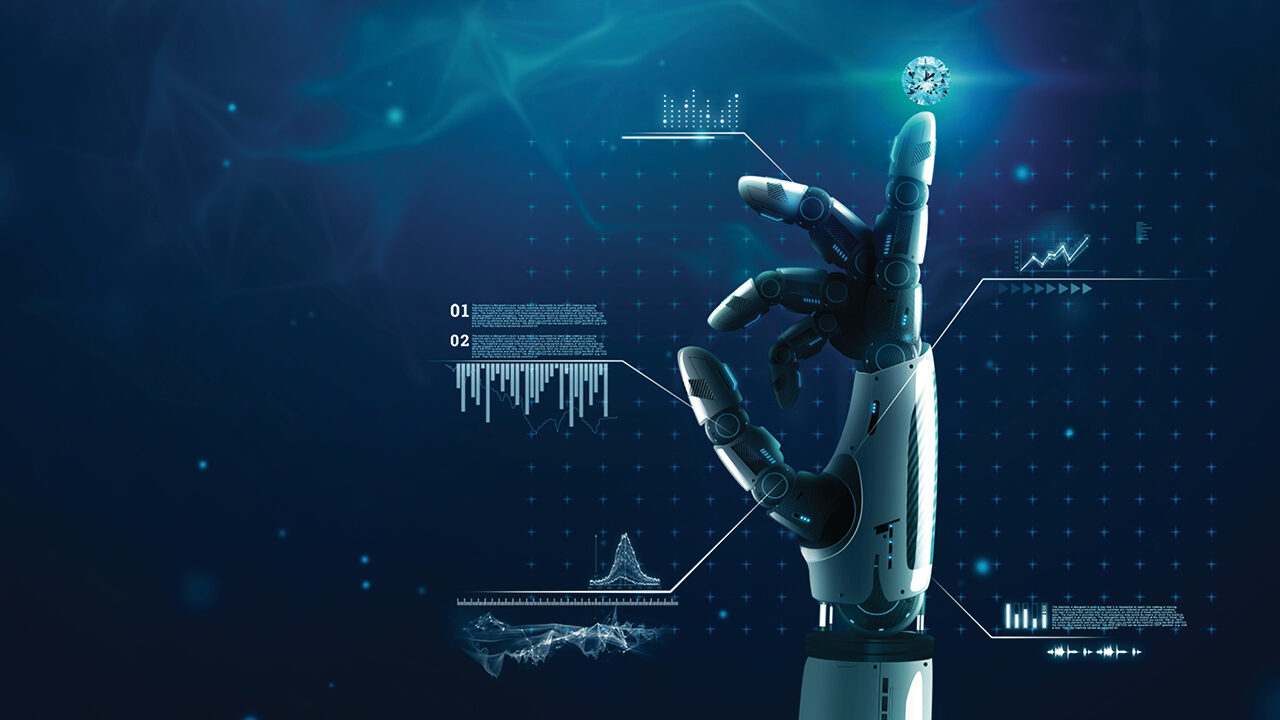Artificial intelligence is taking human bias out of the diamond grading process,
creating accurate, standardized certificates that customers can have total faith in.
Artificial intelligence pervades every area of modern life and while some people are still not clear on what AI means, most embrace the benefits that come with the technology.
Diamond grading has relied on AI for some time owing to its objective nature. While expert gemstone professionals with decades of experience are invaluable to the trade, the utilization of AI for diamond grading ensures a uniform, accurate and objective outcome. The consumer simply wants a beautiful diamond and a clear understanding of the value ascribed to it.
Traditional grading reports may be tough to explain, because customers don’t always understand their
lexicon, nor the variations between diamonds prices, says Larry Sanders, CEO/president of Sanders Jewelers. “Our job as a fourth generation family jeweler, first and foremost, is to earn their trust and make sure they get what they pay for. AI grading empowers us to do that, more easily explaining what they are
buying and how it’s graded.”
“Our customers appreciate the authenticity and transparency that AI provides,” notes Mike Archambault, owner of Karlise Fine Jewelers in Burlington, VT. “They are tired of confusing grading reports with their
inconsistencies.” He explains that younger buyers who also utilize AI in other areas of their lives want clarity in understanding their purchase. “They like the truth and honesty that AI provides in the grading experience and appreciate it’s coming from a reliable source rather than a biased human opinion.”
Goodbye subjectivity
Accuracy is an essential component with AI for consumers, explains Chris Croteau, VP of sales and marketing for Rare & Forever. “AI technology uses algorithms to evaluate color and clarity and conveys them with metrics. There’s no guesswork or subjectivity involved when diamonds are graded with cutting edge technology versus human opinion.”
AI’s efficacy also helps distinguish diamonds that have higher brilliance, something that’s difficult to see in traditional grading reports, claims Archambault. “Rare & Forever diamonds, among the 1% of diamonds graded with AI, are pre-screened for Brown, Green, or Milky (BGM) qualities that devalue the stones and detract from their sparkle. Without those qualities, seen as imperfections, a diamond has more sparkle and therefore more appeal to a buyer.”
In the case of Rare & Forever, it has fed more than 5,000 round diamonds through its AI System, helping to calibrate the grading. The machine learning used by AI grows with every batch. Croteau explains the accuracy of the grading technology. “By leveraging artificial intelligence, the grading system can calculate
measurements 100 million times more accurately than a human,” he says. “AI grading also removes errors and inconsistencies that are inherent to humans handling complex, manual processes.”
AI uses algorithms to evaluate color and clarity and conveys them with metrics. There’s no guesswork.
In the eye of the beholder
Sophisticated technology has not completely eradicated human interaction in the grading process, though. Diamonds in particular are products with which the consumer discovers an emotional connection, especially for engaged couples because of the stone’s symbolism for love, permanence and commitment. When choosing a diamond, many shoppers will say ‘that one speaks to me’ when finally selecting their diamond for bridal jewelry.
Yet diamonds speak to people in different ways and the emotional responses they provoke are in response to what the human eye sees. Beauty can be that intangible something that sets a stone apart
from the others. “A human eye can see beauty, which is still a factor in determining the visceral response a diamond can create,” says Croteau. “Humans provide the emotional element in diamond grading, leaving the analytical side to the machine.”
Every grading laboratory issues grading documents unique to their facility — even the naming of the certificates will differ between labs. Increasing incidences of fraudulent grading certificates have been encountered by laboratories, resulting in the implementation of additional security features to counter falsification.
At Rare & Forever, Croteau explains that each diamond has a unique set of metrics that function like a fingerprint, to help safeguard the authenticity of their grading reports. “Like fingerprints, no two diamonds are exactly the same. Rare & Forever assigns a unique serial number to these recorded metrics to prevent fraudulent certificates. We also include a permanent laser inscription on the table of the diamond as an extra security feature that matches the diamond with its grading report number,” he says.
Sanders finds his clientele embracing AI-graded goods because they trust the technology. “Technology is all around us and nearly everyone embraces it. When it comes to buying a diamond, people — young or old — simply expect to see a beautiful diamond. By providing AI-graded diamonds, I know that I am giving them that,” he explains. “Seeing that a diamond is graded with AI technology versus human opinion puts their mind at ease and makes the buying process easier to understand. Trust is also a huge component of the experience and AI garners the trust they need to feel comfortable and confident in their purchase.”
Image: Shutterstock
Stay up to date by signing up for our diamond and jewelry industry news and analysis.




